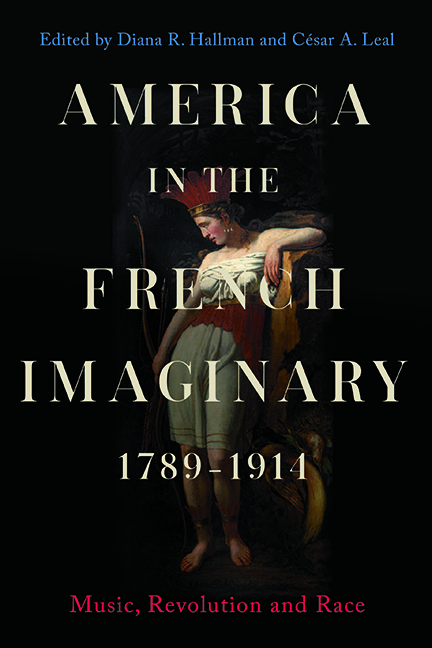Book contents
- Frontmatter
- Dedication
- Contents
- List of Illustrations
- List of Music Examples
- List of Abbreviations
- Editorial Notes
- List of Contributors
- Acknowledgements
- Preface
- Introduction
- Part I American liberté, sauvagerie and esclavage
- Part II Myths of America and Intersecting Identities
- Part III Soundscapes and Sonic Fantasies
- Part IV America, Commodification and Race at the fin de siècle
- Bibliography
- Index
- Music in Society and Culture
9 - Buffalo Bill and the Sound of America during the 1889 World’s Fair
Published online by Cambridge University Press: 15 September 2022
- Frontmatter
- Dedication
- Contents
- List of Illustrations
- List of Music Examples
- List of Abbreviations
- Editorial Notes
- List of Contributors
- Acknowledgements
- Preface
- Introduction
- Part I American liberté, sauvagerie and esclavage
- Part II Myths of America and Intersecting Identities
- Part III Soundscapes and Sonic Fantasies
- Part IV America, Commodification and Race at the fin de siècle
- Bibliography
- Index
- Music in Society and Culture
Summary
The 1889 Exposition Universelle was one of the most famous global expositions of culture ever witnessed, made more so by the iconic Eiffel Tower, which stands today as a reminder of French aspirations at the end of an extremely turbulent century. The French colonial empire, which had grown to enormous proportions by 1880, was a central theme of the fair. From May until November, representatives of nations and tourists from around the globe came to Paris to witness what was claimed by one writer for Le Figaro as ‘a gigantic encyclopedia […] it shows everything and explains all’. In the same piece, the writer continues in his discussion of the importance of the fair with a business analogy:
Following the example of the industrialist who does his inventory to the last penny in order to work out his profits and his future revenue, one could argue that the whole of humanity has come, in 1889, to do its stock-take in Paris, between the Esplanade des Invalides and the Trocadéro.
Published in a guidebook for attendants at the fair, the above remark highlights the goal of the 1889 Exposition Universelle, which in large part was for the French ‘to take stock’ literally of their possessions in various parts of the globe but also to see how France compared with other nations in culture, science, and industry. Thus attendants at the fair were able to stroll past simple dwellings inhabited by native peoples from the colonies of Martinique, Guadeloupe, Tunisia, Algeria, Madagascar, Senegal, Loango (Congo), Pahouin (Central Africa), French Guinea, Tonkin and Annam (North and Central Vietnam), Cochinchina (South Vietnam), and Kanak (Malaysia) in order to eventually arrive at the Eiffel Tower, a symbol of French progress and industrial strength. Like the ancient Tower of Babel, the Eiffel Tower became a rallying point throughout the fair to showcase the racial hybridity of the world and the supremacy of the French nation.
Such a comparative stance taken by the French in relationship to other nations, codified by the fair itself, is key to our understanding of America in the eyes and ears of the French at the end of the nineteenth century. In its display of cultural supremacy, the 1889 World's Fair may also be viewed as a joint celebration of France's ‘sister republic’, which after the turmoil of the Civil War had found itself emerging on the global stage.
- Type
- Chapter
- Information
- America in the French Imaginary, 1789-1914Music, Revolution and Race, pp. 265 - 295Publisher: Boydell & BrewerPrint publication year: 2022



